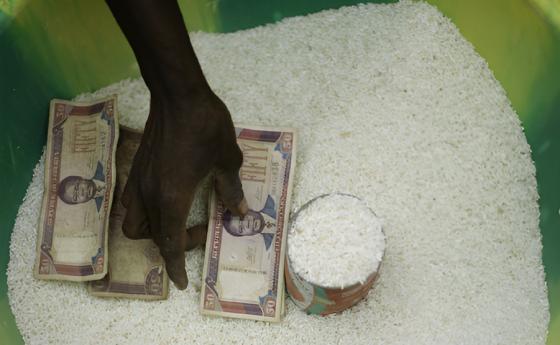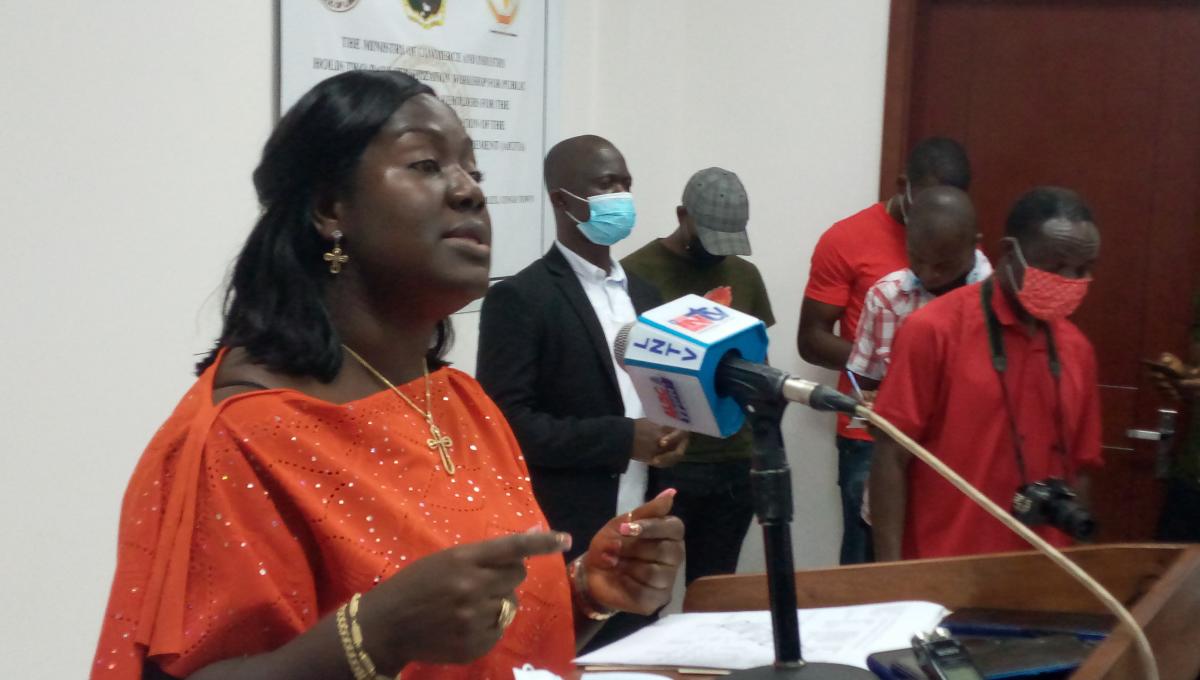‘It Is Really Bad,’ Liberians cry out as rice price soars

As of Oct. 2, price for a cup of rice in Ganta, Nimba County is beyond L$120 (US$0.8) per cup.
....Gbeadeh’s belt-tightening is being shared by many across Liberia, which is one of the poorest countries in the world and heavily dependent on food imports for a country where half of the population lives on less than US$3 a day.
“I can no longer afford to give my children what they really need in terms of food. The sudden increase in the price of rice means we have to cook less and just manage. It is really getting bad. "
Cries Janet Gbeadeh, a mother of five children in Ganta City, Nimba County, who struggles with stagnant earnings and dwindling sales as a snail seller. And with the soaring price of rice, Gbeadeh complains that her income is being squeezed, causing her to reduce the amount of rice she must put on the family’s table.
“It is really bad, but we have no choice." I can no longer cook the amount of rice I used two weeks ago. I can’t simply afford it, "said Gbeadeh, who, like many Liberians, lives in poverty. “I have had to cut down on meat and fish just to get the rice we needed for cooking. There is an urgent need for the government to intentionally ensure price stability before the situation becomes deplorable. "
Gbeadeh, a fortnight ago, used to spend L$420 (US$2.80) on seven cups of rice, but, as rice prices soar, that number has to be cut down to five. She had informed her children that the number might be cut down to three if the price increased beyond L$120 (US$0.8) per cup.
The five cups cost the mother of five L$600 (US$4) — nearly doubling the amount she used to spend on buying seven cups of rice two weeks ago. She had informed her children that if the price rose beyond L$120 per cup, as things stand, she would be forced to reduce the number to three.
Gbeadeh is certain that the price will increase as long as the situation remains volatile, hurting the poor, who have to spend most of their meager earnings on food. The surge in the price of a cup of rice, which is not unique to Ganta alone, but across the country, comes as a 25kg bag of rice is now sold for between L$5,000 (US$33) and L$6,000 (US$40), respectively, in Nimba.
Gbeadeh’s belt tightening is being shared by many across Liberia, which is one of the poorest countries in the world and heavily dependent on food imports for a country where half of the population lives on less than US$3 a day.
According to the World Bank in its third Economic Update on Liberia, food inflation, particularly for rice, rose to 5.2 percent month-over-month in March, despite the fact that the government of Liberia has been striving to maintain the retail price of a 25kg bag of rice at between US$13.50 and US$14.00.
However, there is a gap between the price announced and the one observed in the market—primarily driven by high distribution and transport costs—that disproportionally affects the poorest counties that have bad road networks.
The current soaring price is not strange. In 2021, when the global price of rice fell by 7.8 percent, the average price of a 25 kg bag of imported rice in Montserrado counties soared by 26 percent to US$19 in 2021, up from US$15 in 2020, according to the World Bank.
In other parts of the country, the price of a 25 kg bag of rice then climbed much higher, compounding the misery of many households, the bank said. This increase puts vulnerable households in Liberia at a higher risk of food insecurity at a time when poverty in Liberia remains widespread, with 50.9 percent of the population living below the national poverty line, according to the World Bank Poverty & Equity Brief on Liberia.
About 2.3 million Liberians were unable to meet their basic food and nonfood needs, with poverty being higher in rural areas, home to 71.7 percent of the poor compared to 68 percent of the total population, the Bank said.
The share of the population living below the international extreme poverty line (US$2.15 per person per day in 2017 PPP) was 34.6 percent in 2022, exacerbating poverty in many households that are vulnerable to food insecurity, according to the report. In spite of its arable land for agriculture, Liberia is a net importer of rice, which is the country’s staple, accounting for 30 percent of total imports and 10 percent of GDP.
The situation has also been exacerbated by the fact that the country’s leading rice importers have been pointing to the rise in the global price of rice and the high tax at the Freeport of Monrovia as justification for the need to hike the price of the commodity above the government's preference of US$13.00.
They claim that the government has downplayed their request, so they are left with no option but to import less, pressuring the government to agree to their demand. Annie Gbahn, a single mother living in Ganta, Nimba County's commercial hub, is one of the many people who have been hit by that spike in the price of rice.
Gbahn has four growing children to feed but is struggling with a lack of a steady income to meet their needs. As a petty trader, the increase has seen daily food costs climb beyond her means.
The shortage of rice, which started in late September, had seen the mother of four get hit so badly that she had to reduce the number of cups of rice she cooked from five to three. Like Gbeadeh the snail seller, she had to make the adjustment due to financial status, a situation which is being exacerbated by her daily earnings as a petty trader.
“Now, you are lucky if you earn enough to cook the same amount of rice as before. For many of us, a slight increment affects us badly. The price of rice, at L $120, is expensive and out of reach for many,” Gbahn said. “It is a nightmare. The government appears silent, while the prices continue to climb daily. Where are we heading now? Buying a cup of rice at that amount is ridiculous. The price changes often, and that is the sad part. "
Meanwhile, the issue of rice shortage of rice had been downplayed by President George Weah, who upon his return from the United Nations General Assembly (UNGA) on Sept. 26, rejected the news of rice shortages and price increment, saying it is street talk, but the reality on ground proves different.
"We need to not just listen to the street talks. So I listened to them (importers). Not those that just want to say anything they want to say,” the President said upon his return to the country, at a time when the shortage issue had been going on for a little over a week. “I don’t listen to them. I believe that there is rice, we need to verify again.”
However, Weah's remarks appear far from the truth and have done nothing to keep the price of a 25kb bag of rice from increasing from US$13.00 to over US$23.00 in Montserrado alone.
Until then, Liberians, who already spend more than half their earnings on food, have to grapple with the fact that soaring prices of rice mean reducing the amount of rice to feed the family.
And when people spend that much on food they cannot afford to do much else, including paying for rent, health care, and education for their children. The war in Ukraine and local inflation would force the Liberian government to agree to moderate price increases anytime soon.
But can they? Rice importers claim they are losing millions and cannot import more rice without being allowed to increase the price. With poverty remaining high, the continued increase in the price of rice, which is Liberia’s leading staple food consumed by practically all Liberians daily, could have dire consequences on food security, poverty, and social stability — leaving people in dire straits.


